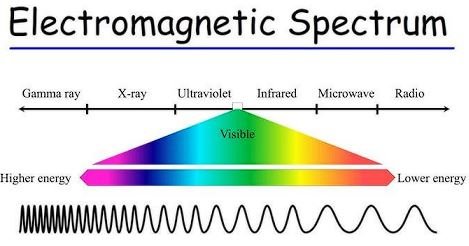Oh, Optics
Written By: Aadarsh Srinivasan
How do you see what you see? How do you take in the world around you? How are you looking at this article right now? The answer is optics. By studying optics, scientists can not only find out how we can see the world around us, but they can also figure out the intricacies of radiation and even the types of light we can’t see.
What is Optics?
In simple terms, optics is the study of light, but it goes much further than just the light we see. The field of optics not only contains visible light, but also invisible light and even radiation. Through optics, we know the behaviors of all types of light, which greatly aids in many other fields like healthcare, astronomy, and microbiology just to name a few.
How does light behave?
Light is made up of transverse waves (as opposed to longitudinal waves that travel through matter and only matter). However, light isn’t just one type of wavelength. Instead, it is a spectrum of different wavelengths. This spectrum is known as the electromagnetic spectrum.
The different colors of light that we see are all different wavelengths. The wavelength of red light is the longest measuring at about 700 nanometers, while violet has the shortest wavelength at about 380 nanometers. So where do we go from here? There are types of light that have shorter wavelengths. When we go past violet light, we get ultraviolet light (original, I know). This is the type of light that most people consider harmful and is the main reason you put on sunblock when you go to the beach. Now what happens when you go even farther into the spectrum? You get to X-rays. X-rays may sound familiar, especially if you had to go the doctor to get a scan of a broken bone. This is the reason it is called an X-ray; it uses X-ray radiation. These wavelengths are even shorter than UV light. Finally, the shortest length is gamma radiation. These rays are mainly found around neutron stars, black holes, or supernovae. What about the types of light that have longer wavelengths than red light? Well, there is infrared light, and then microwaves, which is the energy we feel as heat. Finally, the longest wavelengths of radiation are radio waves. These serve the purpose of communicating over long distances.
Progress using Optics
So how has optics actually helped us progress in science, and in everyday life? Well, we use telescopes to uncover objects in space far away from us, and we use microscopes to examine small objects and look for details that aren’t visible to the naked eye. How do we do this? Well, you can thank optics for that. By using lenses to magnify certain objects, we can examine things that we didn’t have the ability to previously. How do people with poor vision see? With glasses and contact lenses, which again, are possible due to studying optics. Smartphones and other technological appliances use optics for displays and communication. The world is filled with inventions that are related to optics, and our knowledge of it greatly helps build us build ourselves a greater understanding of the universe.
